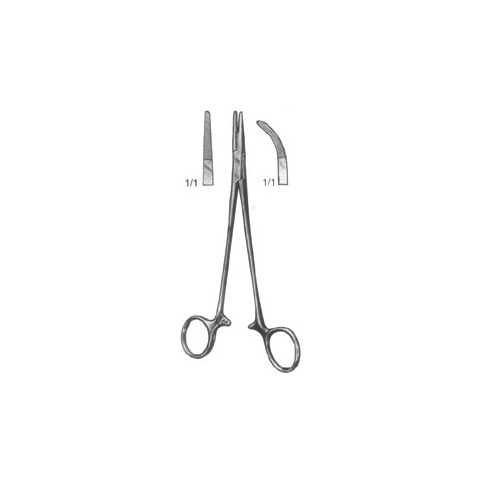The hemostat is considered one of the most basic tools within the surgical set. According to Abdelaziz (2019), the name of any type of hemostat is pegged on two crucial factors, which include the design of the distal tip and the set-up of the jaw. As documented by Fukuba et al. (2018), Hemostats are primarily used in surgery to clamp blood vessels, thus, regulate the degree of bleeding. They are equally critical in holding and positioning tissues during surgery (Shichijo et al., 2020). Moreover, an article by Kamal et al. (2020) notes that hemostats are perfect tools for navigating and exploring deeper surgical sites. As such, the function of this guide is to educate nurses on the proper use of hemostat forceps and issue warnings during their use. The estimated read time for the guide is Five minutes.
General Information on the Use of The Hemostat
- The sterilization procedure must incorporate authorization from the end user, who is obliged to consistently ensure the procedure is properly observed.
- Every sterilization and cleaning procedure is a general instruction. Hence, any slight difference in the procedure should first be assessed and possible implications determined.
- The directions are strictly to be interpreted by persons with adequate training and knowledge of the surgical process and technique.
- The federal law of the land controls the sale and use of the tool based on the physician’s order.
Warnings for Reprocessing of Hemostats
- The instruments are not sterile and must be cleaned and sterilized prior to their use.
- The cover of the tips and any other packaging must be removed from the tool before its application.
- Routine sterilization should not be done through immediate use of steam sterilization (IUSS), as it should strictly be preserved for emergency situations.
Instructions on Use
- During the entire process, remove the accumulated debris using a lap sponge and sterilized water occasionally to avoid any instance of bodily fluids or blood drying on the tool.
- The hemostat should stay rinsed with sterilized water, as required, without causing aerosols.
- The hemostat should be disassembled based on the provided instructions from the manufacturer and properly arranged to ensure all parts are available.
- Before sterilization and after cleaning, every moving section of the hemostat should be lubricated using a physiologically approved lubricant

Place the hemostat securely during transportation to prevent any shifting or damage.
Conclusion
In conclusion, hemostat forceps are essential surgical tools that play a critical role in ensuring the successful execution of surgeries. Ideally, the forceps aid in the prevention of blood loss on a surgical site by effectively clamping the blood vessels. Moreover, they permit proper positioning of tissue to expose the needed surgical area, thus, ensuring visibility. They equally allow for effective navigation through a surgical site. Given the critical roles of the hemostats, numerous directives have to be observed to ensure their safety during application. For instance, the sterilization procedure has to conform to the instructions given by the manufacturer of the tool. Nevertheless, the use of the hemostats must solely be reserved for those with adequate knowledge and training to ensure the safety of the patients. It is important to ensure that every hemostat is thoroughly inspected and tested for both cracks and any stains of blood during the sterilization process.
References
Abdelaziz, M. (2019). Hemostatic forceps in various gastrointestinal bleeding scenarios: A single center comparative study with endoclip. Cogent Medicine, 6(1), 1623000. Web.
Fukuba, N., Sonoyama, H., Moriyama, I., Ishihara, S., & Kinoshita, Y. (2018). Soft coagulation using hemostatic forceps for prevention of post-endoscopic papillectomy hemorrhage. Journal of Digestive Endoscopy, 9(03), 114-117. Web.
Kamal, F., Khan, M. A., Tariq, R., Ismail, M. K., Tombazzi, C., & Howden, C. W. (2020). Systematic review and meta-analysis: monopolar hemostatic forceps with soft coagulation in the treatment of peptic ulcer bleeding. European Journal of Gastroenterology & Hepatology, 32(6), 678-685. Web.
Shichijo, S., Takeuchi, Y., Waki, K., & Uedo, N. (2020). Pulley traction–assisted endoscopic submucosal dissection with hemostatic forceps for a laterally spreading tumor in the ascending colon. VideoGIE, 5(12), 684-685. Web.